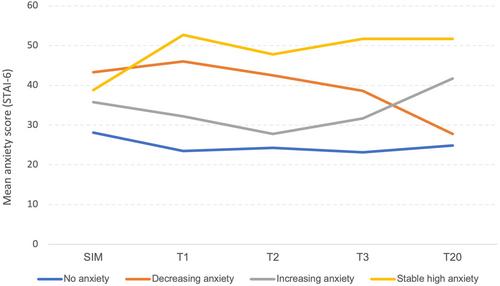Situational anxiety in head and neck cancer: Rates, patterns and clinical management interventions in a regional cancer setting
Abstract
Introduction
Research indicates that the immobilisation mask required for radiation therapy (RT) for head and neck cancers can provoke intense anxiety. However, little is known about the rates of this anxiety, whether it changes over a course of treatment and how it is managed in clinical practice. This study aimed to describe the rates and patterns of situational anxiety in patients undergoing RT for head and neck cancer and the use of anxiety management interventions in current clinical practice in a major regional cancer setting in New South Wales, Australia.
Methods
Situational anxiety rates and patterns were assessed at five time points using the State-Trait Anxiety Inventory prior to treatment planning (SIM), the first three treatment sessions (Tx 1, Tx 2 and Tx 3) and treatment 20 (Tx 20). Sessions were observed to record the use of general supportive interventions (music and support person) and anxiety-specific interventions (break from the mask, relaxation techniques and anxiolytic medication). Sociodemographic and clinical information was extracted from the medical record.
Results
One hundred and one patients were recruited. One-third had clinically significant anxiety at any of the first three time points (33.3–40%), and a quarter at Tx 3 (26.4%) and Tx 20 (23.4%). Of the sample, 55.4% had available data for categorisation into one of four pattern groups: ‘No Anxiety’ (46.4%); ‘Decreasing Anxiety’ (35.7%); ‘Increasing Anxiety’ (7.1%); and ‘Stable High Anxiety’ (10.7%). Most participants had social support present at SIM (53.5%) and listened to music during treatment (86.7–92.9%). Few participants received relaxation techniques alone (1.2–2.3%). Anxiolytic medication was provided for 10% of patients at some stage during the treatment journey and 5% required a break from the mask at SIM, with frequency decreasing throughout the treatment course.
Conclusions
In this regional cancer setting, situational anxiety was common, but generally decreased throughout treatment. Some patients experience persistent or increasing anxiety, with up to 10% of patients receiving specific anxiety management interventions.


 求助内容:
求助内容: 应助结果提醒方式:
应助结果提醒方式:


